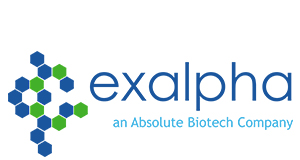Mouse anti Human PIG3 (p53 inducible gene 3)
Mouse anti Human PIG3 (p53 inducible gene 3), Monoclonal, IgG1, Clone: 10A2
SKU
EXAX1156M
Packaging Unit
100 µg
Manufacturer
Exalpha Biologicals Inc
Availability:
loading...
Price is loading...
Clone: 10A2
Background: p53 inducible gene-3 (PIG-3) may be a long-lived reporter, which may be useful for detecting transient activation of p53. The p53 tumor suppressor is the most commonly mutated gene in human cancers. The p53 protein, which is stabilized in response to different biological checkpoints, is activated by DNA damage, hypoxia, viral infection, or oncogene activation resulting in efects such as cell cycle arrest, apoptosis, senescence, differentiation, and antiangiogenesis. Other genes also implicated in the downstream effects as a result of p53 activation are: p21WAF1, GADD45, 14-3-3, bax, Fas/APO1, KILLER/ DR5, Tsp1, IGF-BP3 and others. The p53-inducible gene 3 (PIG3), was recently identified in a screen for genes induced by p53 before the onset of apoptosis. PIG3 shares significant homology with the oxidoreductases from several species. PIG3 protein is localized to the cytoplasm and induced in primary, non-transformed, and transformed cell cultures after exposure to genotoxic agents. The induction of PIG3 by p53 occurrs with delayed kinetics as compared with other p53 downstream targets, such as p21 and MDM2. PIG3 levels are increased during p53-mediated growth arrest. Elevated levels of PIG3 are maintained in cells that resume cycling in the absence of ectopic p53 expression.
Positive Control: Jurkat cell lysate
Immunogen: Hybridoma produced by the fusion of splenocytes from mice immunized with recombinant human PIG-3 protein.
Purification Method: Protein A/G Chromatography
Concentration: See vial for concentration
Formulation: Provided as solution in phosphate buffered saline with 0.08% sodium azide
References: 1. Flatt, P.M., et al., p53-dependent expression of PIG3 during proliferation, genotoxic stress, and reversible growth arrest. Cancer Lett. 2000, 156, 63-732. Venot, C., et al., The requirement for the p53 proline-rich functional domain for mediation of apoptosis is correlated with specific PIG3 gene transactivation and with transcriptional repression. EMBO J. 1998, 17, 4668-46793. el-Deiry, W.S., Regulation of p53 downstream genes. Semin. Cancer Biol. 1998, 8, 345-357
UniProt: QORX (Human)
Caution: This product is intended FOR RESEARCH USE ONLY, and FOR TESTS IN VITRO, not for use in diagnostic or therapeutic procedures involving humans or animals.
Background: p53 inducible gene-3 (PIG-3) may be a long-lived reporter, which may be useful for detecting transient activation of p53. The p53 tumor suppressor is the most commonly mutated gene in human cancers. The p53 protein, which is stabilized in response to different biological checkpoints, is activated by DNA damage, hypoxia, viral infection, or oncogene activation resulting in efects such as cell cycle arrest, apoptosis, senescence, differentiation, and antiangiogenesis. Other genes also implicated in the downstream effects as a result of p53 activation are: p21WAF1, GADD45, 14-3-3, bax, Fas/APO1, KILLER/ DR5, Tsp1, IGF-BP3 and others. The p53-inducible gene 3 (PIG3), was recently identified in a screen for genes induced by p53 before the onset of apoptosis. PIG3 shares significant homology with the oxidoreductases from several species. PIG3 protein is localized to the cytoplasm and induced in primary, non-transformed, and transformed cell cultures after exposure to genotoxic agents. The induction of PIG3 by p53 occurrs with delayed kinetics as compared with other p53 downstream targets, such as p21 and MDM2. PIG3 levels are increased during p53-mediated growth arrest. Elevated levels of PIG3 are maintained in cells that resume cycling in the absence of ectopic p53 expression.
Positive Control: Jurkat cell lysate
Immunogen: Hybridoma produced by the fusion of splenocytes from mice immunized with recombinant human PIG-3 protein.
Purification Method: Protein A/G Chromatography
Concentration: See vial for concentration
Formulation: Provided as solution in phosphate buffered saline with 0.08% sodium azide
References: 1. Flatt, P.M., et al., p53-dependent expression of PIG3 during proliferation, genotoxic stress, and reversible growth arrest. Cancer Lett. 2000, 156, 63-732. Venot, C., et al., The requirement for the p53 proline-rich functional domain for mediation of apoptosis is correlated with specific PIG3 gene transactivation and with transcriptional repression. EMBO J. 1998, 17, 4668-46793. el-Deiry, W.S., Regulation of p53 downstream genes. Semin. Cancer Biol. 1998, 8, 345-357
UniProt: QORX (Human)
Caution: This product is intended FOR RESEARCH USE ONLY, and FOR TESTS IN VITRO, not for use in diagnostic or therapeutic procedures involving humans or animals.

 Deutsch
Deutsch






